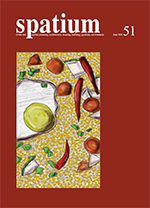Urban identity and planning: Conceptual study on identity of urban, identity in urban, and identity for urban
DOI:
https://doi.org/10.2298/SPAT230828002UKeywords:
city branding, human identity, place identity, planning, urban identityAbstract
Urban identity is gaining increasing attention across different research disciplines. However, there is no consensus as to how this concept can be integrated into planning theory, because every discipline has diverse concepts of urban identity, which are often included in planning theory without clarity. For example, environmental psychology literature and the social sciences have defined urban identity as human or social identity, while architecture and urban design characterize it as the urban/city or architectural identity. Therefore, this paper provides a conceptual framework for applying urban identity in planning theory and practice. This paper used the literature review method by synthesizing several relevant and reliable sources, particularly in planning, architecture, environmental psychology, social science, and geography. The result is an explanation of three concepts of urban identity, which are the ‘identity of urban,’ ‘identity in urban,’ and ‘identity for urban’. The identity of urban helps planners to design functional and characteristic cities. Meanwhile, identity in urban helps planners to achieve the humanist aspect of a city and social justice; and identity for urban helps planners to advance a city’s economy and attract investors and tourists. These concepts are interrelated and can be integrated to support the sustainability of cities and their citizens, by achieving harmony between the population’s need for orientation and identification, the function and aesthetics of the city, and the city’s attractiveness to visitors.


